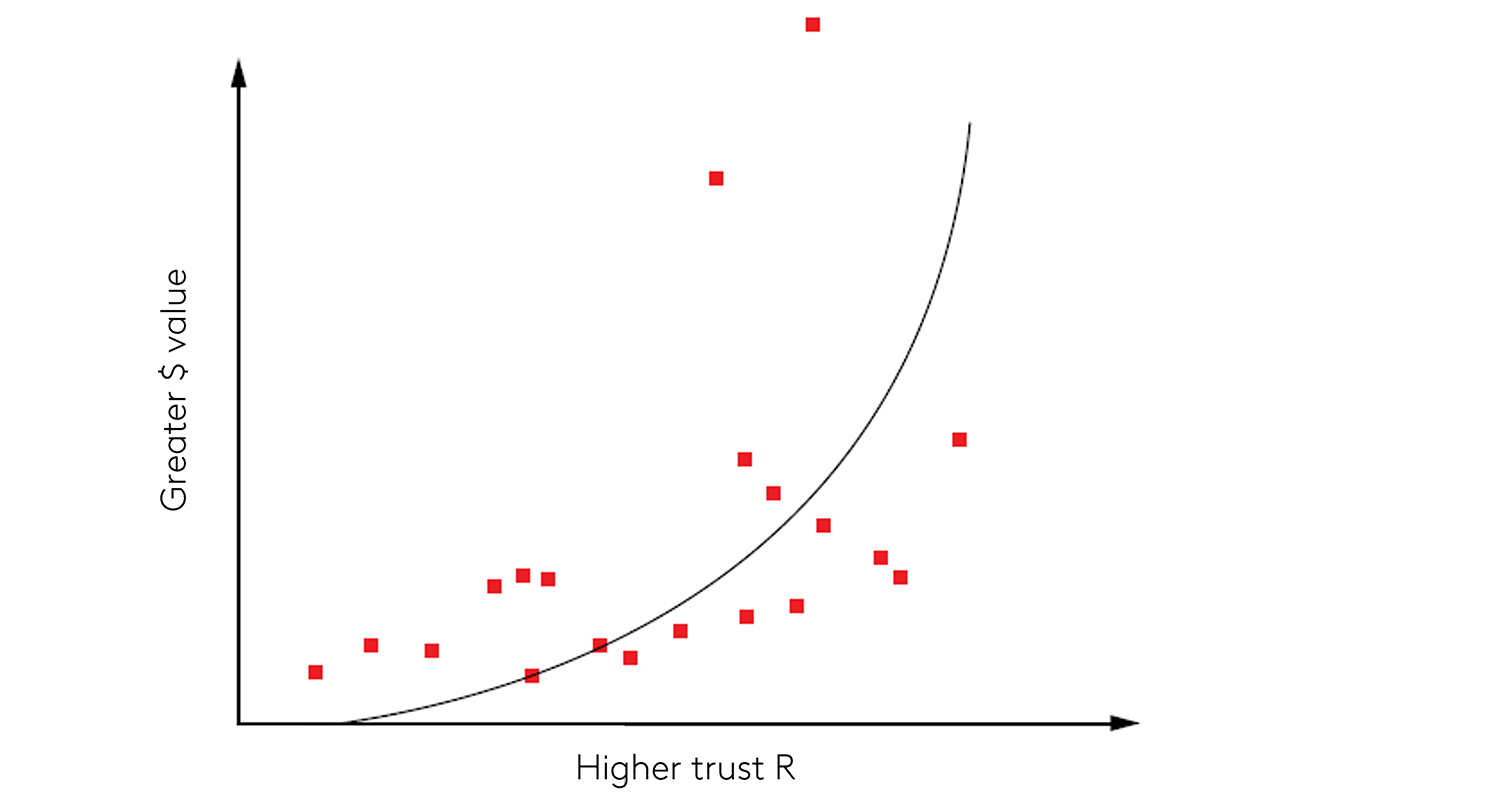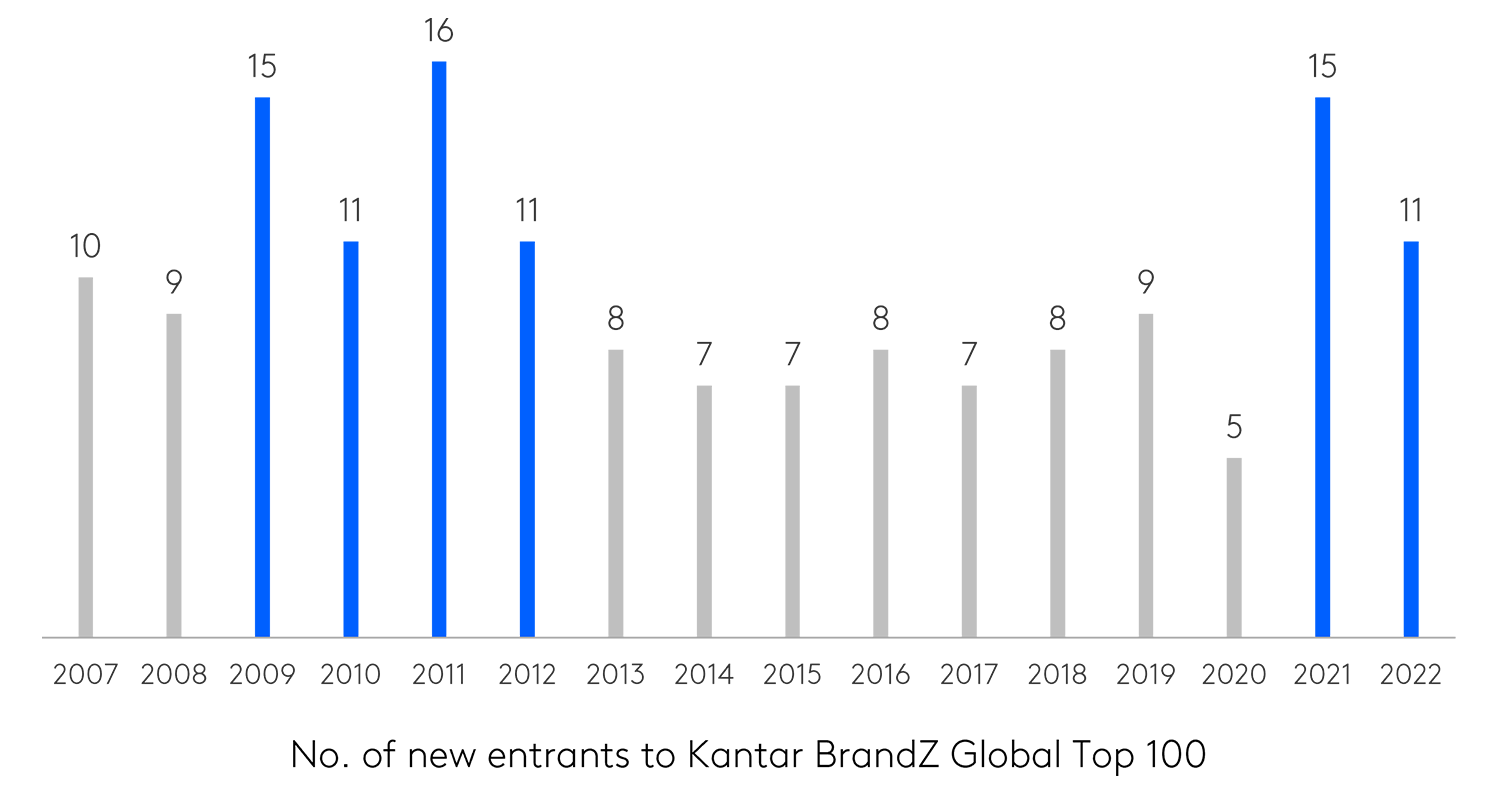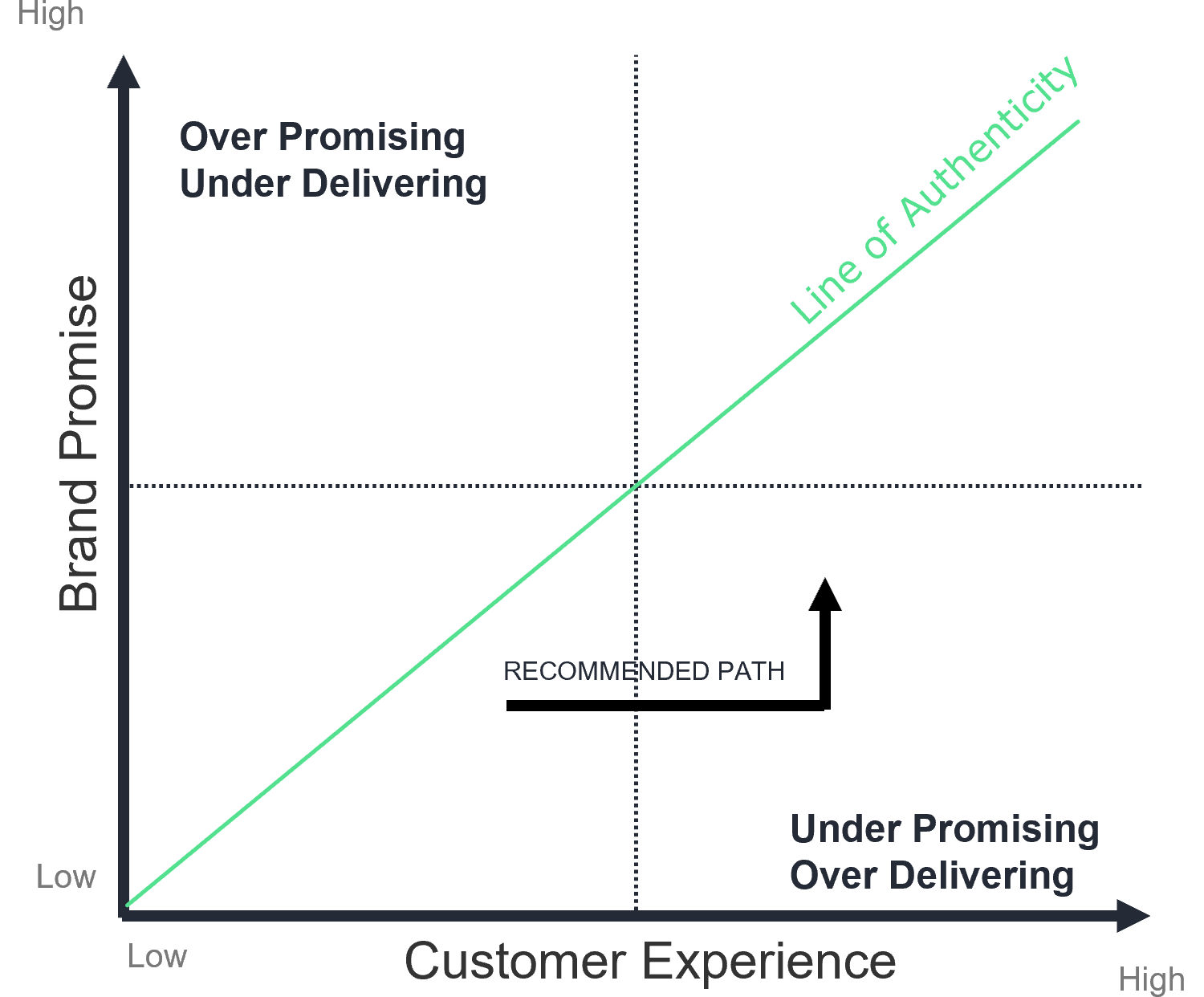There’s a gap?
Customer experience (CX) is central to creating value, and it is even more important in times of crisis when brands need to fight harder for customers. Great customer experience should meet customer expectations across physical and digital touchpoints and deliver your brand’s values in order to drive brand growth.
In the race to digitise, a growing disconnect between brand promise and customer experience means that peoples’ emotional needs are being increasingly undermined or forgotten. And the impact of recession throws into sharp relief the difference between brands whose customer touchpoints are aligned with their brand promise and are therefore, more resilient, versus those who aren't and subsequently struggle to retain customers. Your brand’s CX may meet the peoples’ functional requirements, which can be great for convenience and efficiency, but limit how well it supports your brand’s equity.
Through high-quality, consistently delivered touchpoint experiences, that provide meaningful encounters and relevant communications, CX and brand can work together to supercharge brand growth.
Using evidence from our global datasets, we uncover the formula that strong brands use to close the gap between brand promise and customer experience and show how the role of CX is fundamental in driving brand differentiation.
“The only source of knowledge is experience”
While Albert Einstein probably didn’t have brand building in mind when he uttered these words, a memorable and distinctive experience is one of the primary drivers for creating a strong brand. Strong brands are built on the positive experiences people have with them; brand promise influences consumers’ brand choice, and the experience confirms their expectations.
When a brand builds on that experience and adds value to people’s lives, the result is a virtuous circle. If these experiences align with the promises and expectations built by the brand’s marketing activity, then the experience serves to embed memories which help make it the easy choice next time.
Kantar’s Connect database shows that up to 75% of brand building comes from experiential touchpoints. Product or Service Experience and Word of Mouth are experiential touchpoints that feature in the top 5 most impactful touchpoints globally.
Average impact on brand strength – top 5 global touchpoints

Source: Connect global database norms
Given their importance, you should optimise these experiential touchpoints, through meeting expectations and building trust. Kantar BrandZ data shows that when trust scores increase, so does the average brand value. The more your customers trust you, the more your brand is worth. This is even more important during times of economic crisis, where less disposable income means more considered (and less risky) spending.
Meeting expectations builds trust and drives brand value

Source: Kantar BrandZ database
The experience gap in banking
We looked at over a hundred retail banks in Europe and the US to understand how a gap between a brand’s promise and how it is delivered affects consumer preferences. For banks with a negative gap – meaning they are either underdelivering or promising too much – the average preference stands at 32. This is extremely low and likely to have a negative impact on market share. But when brands align their customer experiences with what they stand for, they achieve a preference score of 61. In other words, brands can gain 29 points in customer preference by closing the gap between promise and experience. And why does this matter? Higher levels of brand preference make it easy to retain and attract new customers.
Difference makes the difference
While consistently meeting expectations, being customer-centric and building trust are crucial factors for success, they aren’t enough. To bond with a brand, people need a brand experience that is different, or remarkable, as well as trusted and meaningful.
This is crucial in the current climate where economic uncertainty and disruption can provide opportunities for brands to differentiate and capitalise on new consumer needs.
Our Kantar BrandZ database tracks the top 100 most valuable brands. During the two recent periods of economic disruption – the financial crisis (2009–2012) and the current economic crisis (2021-2022) – we saw the highest number of new entrants in the global top 100.
Brands can achieve breakthrough growth in times of economic disruption

Source: Kantar BrandZ database
Analysis of these 'breakthrough brands' showed they deliver more than a solid functional experience - they offered a Meaningfully Different one. These brands score strongly on trust via a clear perception of customer care and openness. They also go beyond being trusted and meaningful – they offered an experience that stood apart from others and felt innovative compared to competitors. Our research proved that landing ‘Difference’ in one service brand reduced churn by 50%, by closing the gap between promise and experience.
How to close the gap between brand and CX
If you can clearly articulate what is different about your brand and use that as a framework for all elements of your CX, you’ll be on track to create more memorable and distinctive experiences that not only lead to positive commercial outcomes like churn reduction, but also help connect your customer experience to your brand identity and supercharge growth. Where customers feel an emotional bond between the expectation and experience, they are more likely to remain loyal, as it 'feels' right to them.
Mapping brand promise against customer experience in our Brand Authenticity Framework shows how aligned brand promise and customer experiences are. It shows where you are overpromising and underdelivering, helps you understand where to focus to build trust and how to design Meaningful Different experiences. Only when both are strong does a brand have authenticity – they deliver what they promise.
Brand Authenticity Framework

Moreover, consistently tracking brand and CX metrics will create an aligned organisation and help you to close the gap and unite brand values with customer interactions to increase brand preference.
For both brand and CX success, close the gap between your brand promise and customer experience by creating a strong emotive footprint rooted in your brand’s Meaningful Difference. Identify what makes you stand out from the crowd, and sell it.
Get in touch to find out more.



